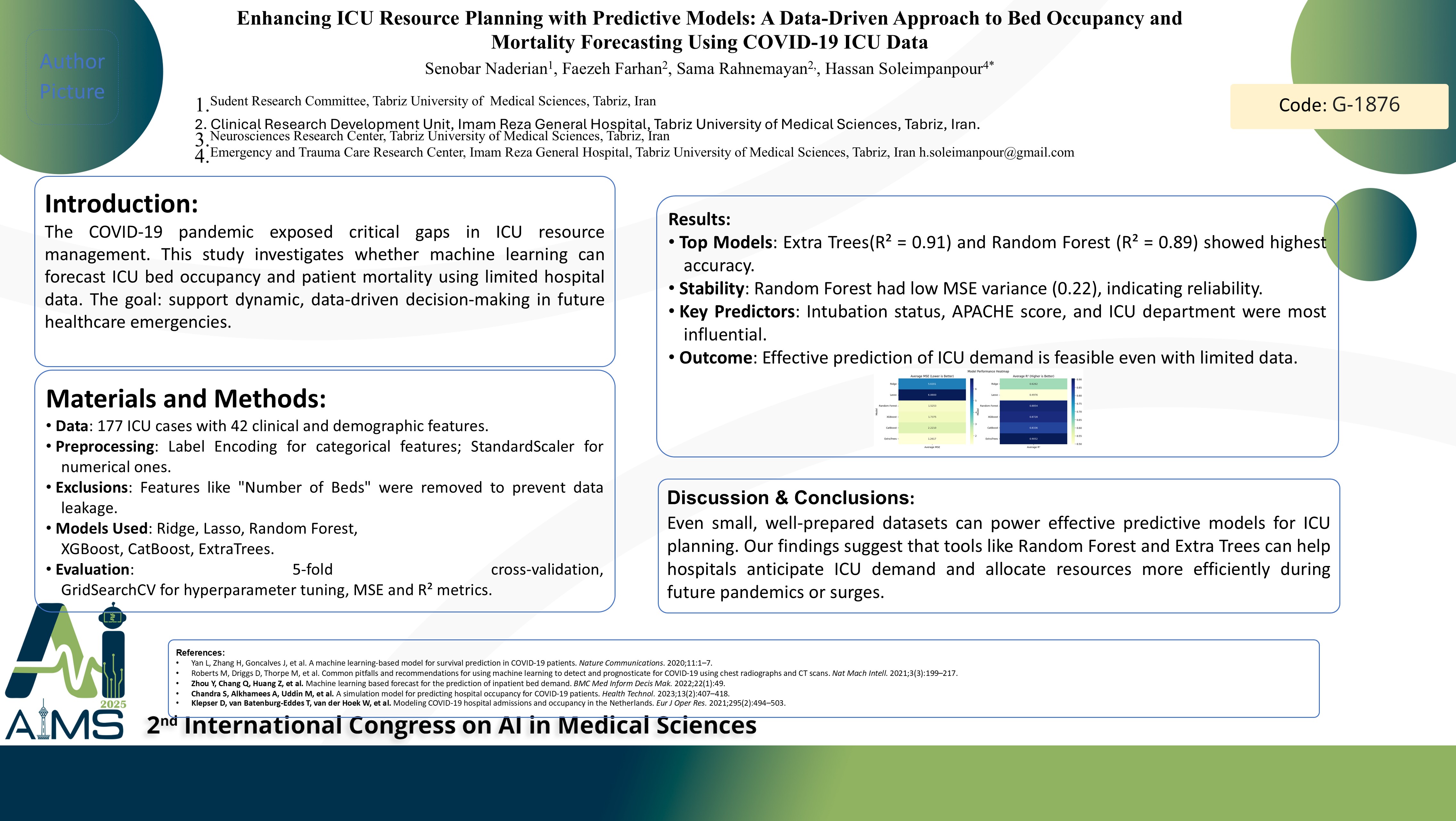Enhancing ICU Resource Planning with Predictive Models: A Data-Driven Approach to Bed Occupancy and Mortality Forecasting Using COVID-19 ICU Data
Code: G-1876
Authors: Senobar Naderian, Faezeh Farhan ℗, Sama Rahnemayan, Hassan Soleimpanpour *
Schedule: Not Scheduled!
Tag: Biomedical Signal Processing
Download: Download Poster
Abstract:
Abstract
Background: The COVID-19 pandemic posed significant challenges for ICU management, emphasizing the need for accurate predictions of ICU bed occupancy and patient mortality. These predictions are vital for resource allocation during crises. Although large datasets typically power robust models, this study uses a limited dataset of 177 ICU entries with 42 features, collected from a single hospital during the pandemic. Despite the small sample size, the study explores machine learning approaches to forecast ICU bed usage and mortality, demonstrating that even limited data can offer insights for optimizing hospital management during future health crises. Method: The dataset includes ICU-related variables like department, patient demographics, intubation status, APACHE scores, and outcomes. Preprocessing involved encoding categorical features using Label Encoding and scaling numerical features with StandardScaler. To avoid data leakage, features like "Number of Beds" were excluded. Machine learning models—Ridge, Lasso, Random Forest, XGBoost, CatBoost, and ExtraTrees—were evaluated using 5-fold cross-validation, with hyperparameters optimized through GridSearchCV. Model performance was assessed with Mean Squared Error (MSE) and R². Results: Despite the small dataset, Random Forest and CatBoost achieved the highest performance, with average R² values of 0.91 and 0.92, respectively. These models showed strong generalization, with Random Forest demonstrating consistent results across folds (MSE standard deviation of 0.22). Feature importance analysis revealed that factors like intubation status, APACHE score, and ICU department significantly contributed to model accuracy, suggesting that predictive modeling can be effective even with limited data. Discussion: The results show that machine learning models, especially Random Forest and CatBoost, can enhance ICU resource management with small datasets. These models help predict ICU bed occupancy and mortality, which is critical during peak demand periods. The study emphasizes feature selection's importance in healthcare settings, suggesting that these models support real-time ICU management by helping hospitals allocate resources and prepare for surges. Conclusion: This study demonstrates that even with a small dataset, machine learning models—particularly Random Forest and CatBoost—can predict ICU bed occupancy and patient outcomes. These findings highlight predictive analytics' potential to improve healthcare systems' responses during crises, optimizing resource allocation and patient care.
Keywords
Mortality Forecasting, Bed Occupancy, ICU Resource
